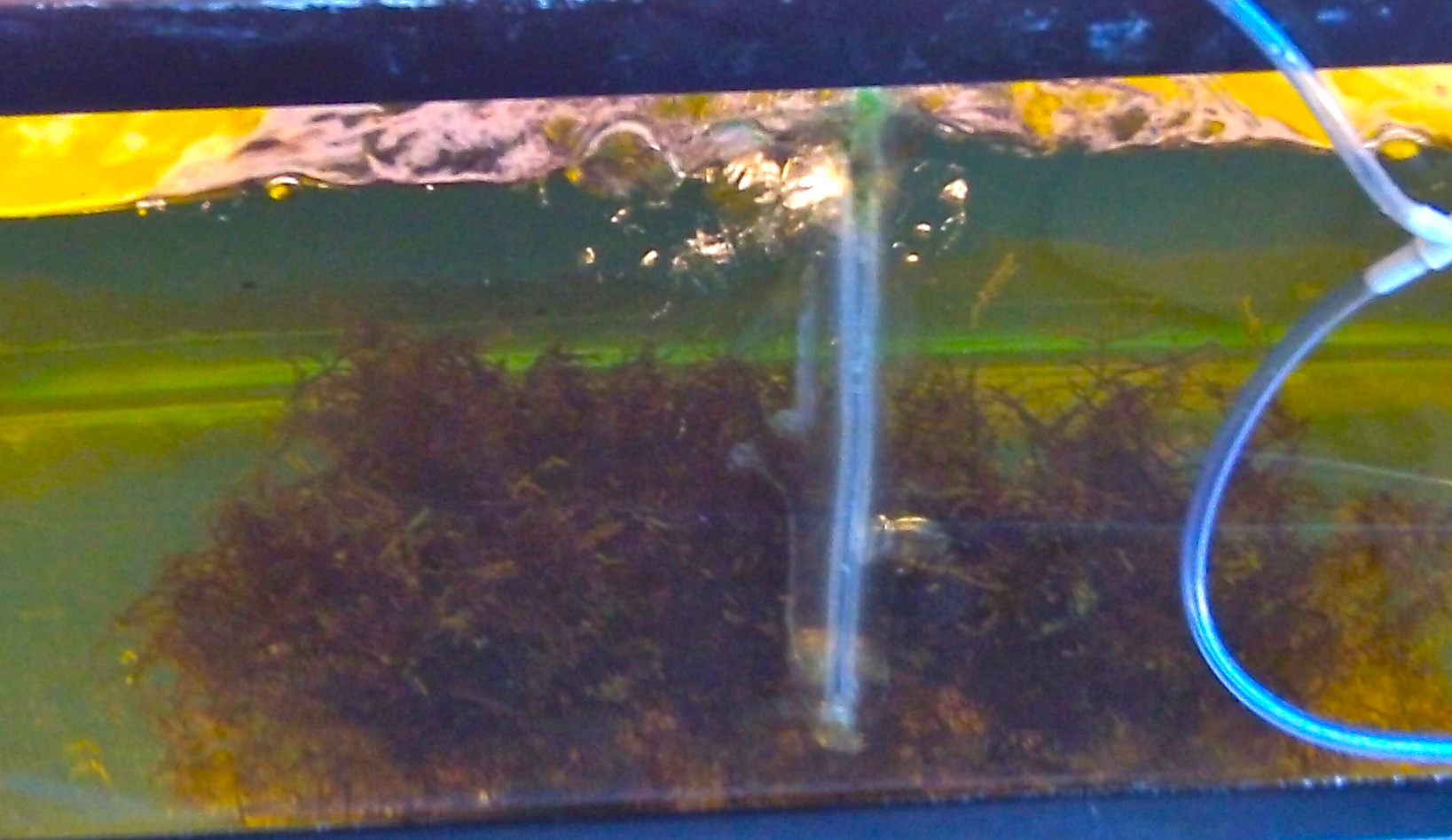Lew Weil, a molecular biologist, grows seaweed for his company, Austin Sea Veggies. In his garage, Lew grows ogo, edible seaweed that looks a little like material for a gelatinous bird’s nest. Where else but Austin, Texas, hundreds of miles away from any coastline, would you find a scientist hunched over an aquarium full of seaweed. Yes, Austin is weird.
But beware of weird. More often than not, an Austinian’s weirdness leads to innovation and an audacious capacity for leapfrogging the rest of us. Lew began his metamorphosis from lab scientist to aquaculturalist when he wondered if there was a more sustainable way to grow agar, the substrate used in Petri dishes for growing microorganisms. Agar comes from polysaccharides in red algae; Japanese and South Asian companies grow most of the algae in farms along their coastlines. Lew thought there might be a way to grow algae and seaweed without relying on coastlines. Since seaweed enters our food chain more often than you may think, like through ice cream and carrageenan-toting apple cider (even your toothpaste has it), Lew foresaw the time when the need for seaweed would outstrip the supply of coastlines. Maybe Lew isn’t that weird.
In 2003, the Food and Agriculture Organization reported that the annual value of seaweed produced for human consumption in the U.S. was $5 billion.[1] But the largest producers are in China and South Asia. After testing and retesting types of seaweed, Lew embraced ogo, from Hawaii and popular with Hawaiians, he moved beyond agar to producing seaweed for human consumption. Enter Austin Sea Veggies. Growing edible seaweed became an obsession for a mad microbiologist. With a degree in biology from Texas A & M, Lew approaches his quest for sustainable seaweed aquaculture using scientific methods with all the geekiness of an agar-ian scientist, now an agrarian scientist.
Lew’s experiments seek an understanding of the seaweed’s growing seasons, its ability to endure temperature oscillations, like the furnace-blast heat during a summer in Texas. Last summer he lost his entire crop and is just now beginning to recover with a new set of “mother” plants. His ogo grows from these plants, its delicate, lacy fronds emerging from the tips of the mother branches. His customers, many of them members of the Hawaiian community in Texas, are anxiously awaiting fresh deliveries of his new crop, typically five to six pounds per month. Restaurants and grocery stores such as Wheatsville, snatch up his “sea veggies” on a regular basis.
But scaling is the entrepreneurs’ vexation. Success brings customer demand, and in Lew’s case, an aquarium in his garage won’t begin to produce enough ogo to satisfy his hungry customers. So look has been talking with other entrepreneurs, including one who has a saltwater quarry in West Texas, an auspicious discovery when oil drillers penetrated the Permian Sea basin, which exists throughout much of the Texas landscape. Salt water gushed into a quarry and sits underutilized for aquaculture, but not lost on Lew. He has a vision for using the saltwater quarry for growing seaweed and shrimp. All he needs is the cooperation of the quarry’s owner, some capital, and a little time off from his day job as a biologist. The scaling bugaboo is the barrier that many food entrepreneurs encounter, some successfully, others not. To get Lew’s food science out of his lab and into sustainable production will take the graces of another entrepreneur, one that turn the Permian Sea into an ogo incubator.
How enterprises like seaweed companies in Austin fit into the global food system, or even more miraculously, into Austin’s food system? As a food entrepreneur, Lew easily fits into Austin’s vibrant food culture. But what about seaweed? And seaweed grown in garages? Steve Jobs began in a garage.

Author